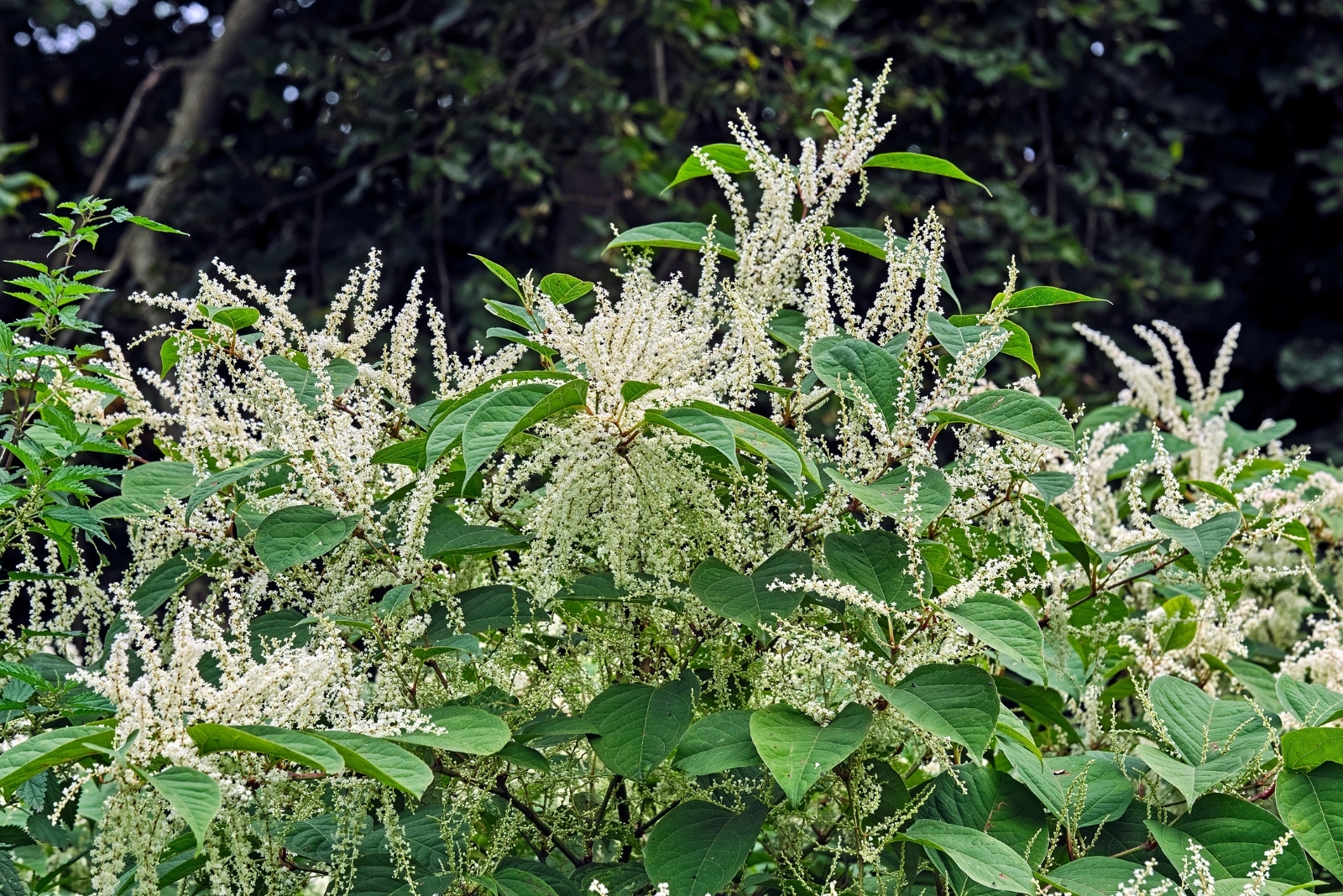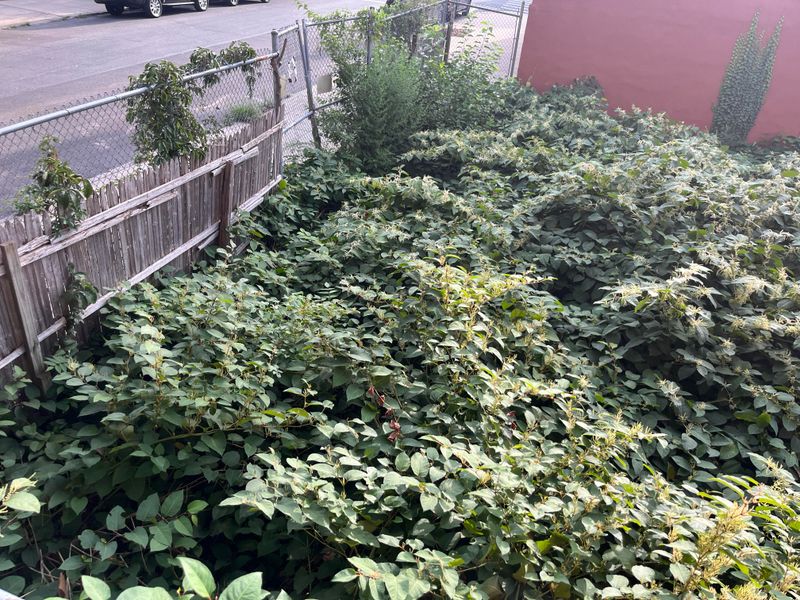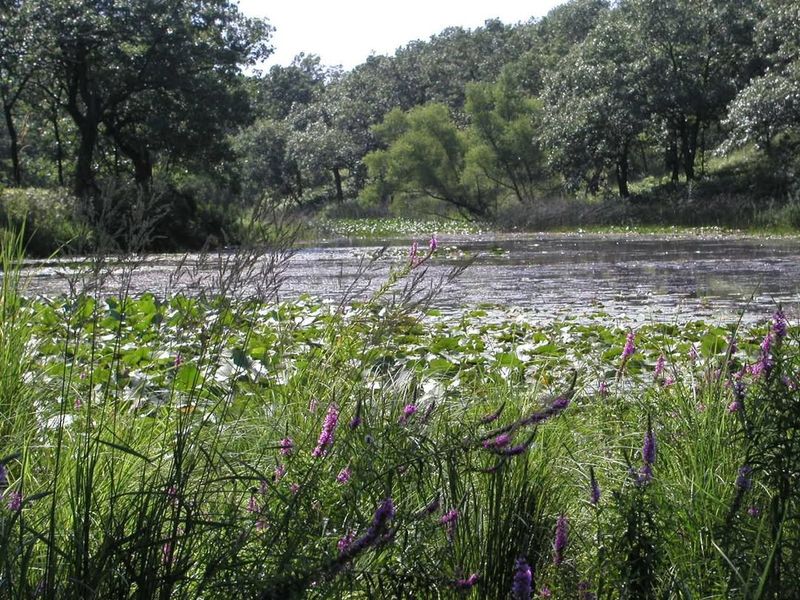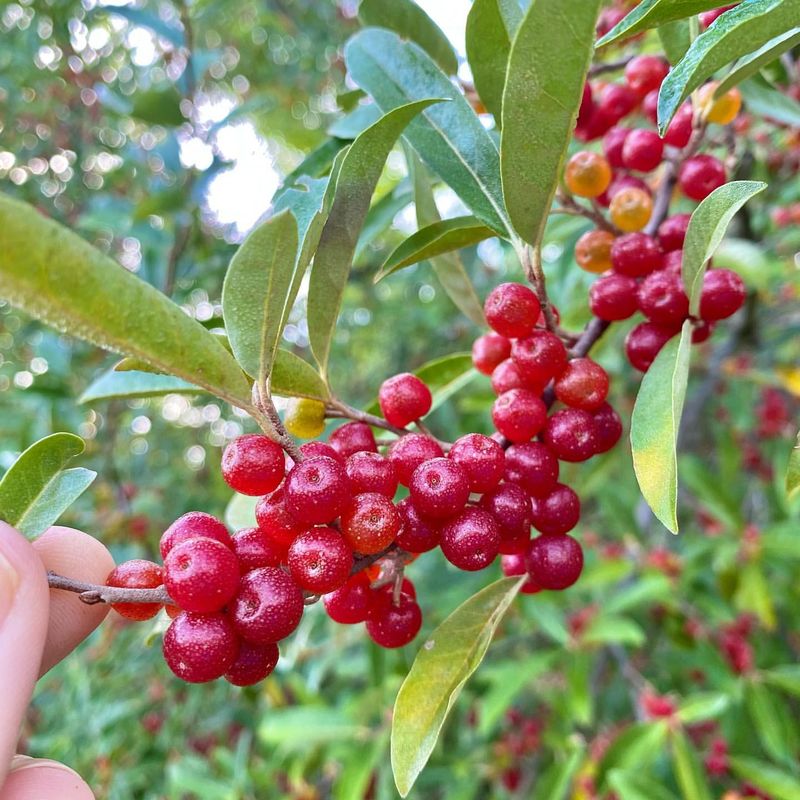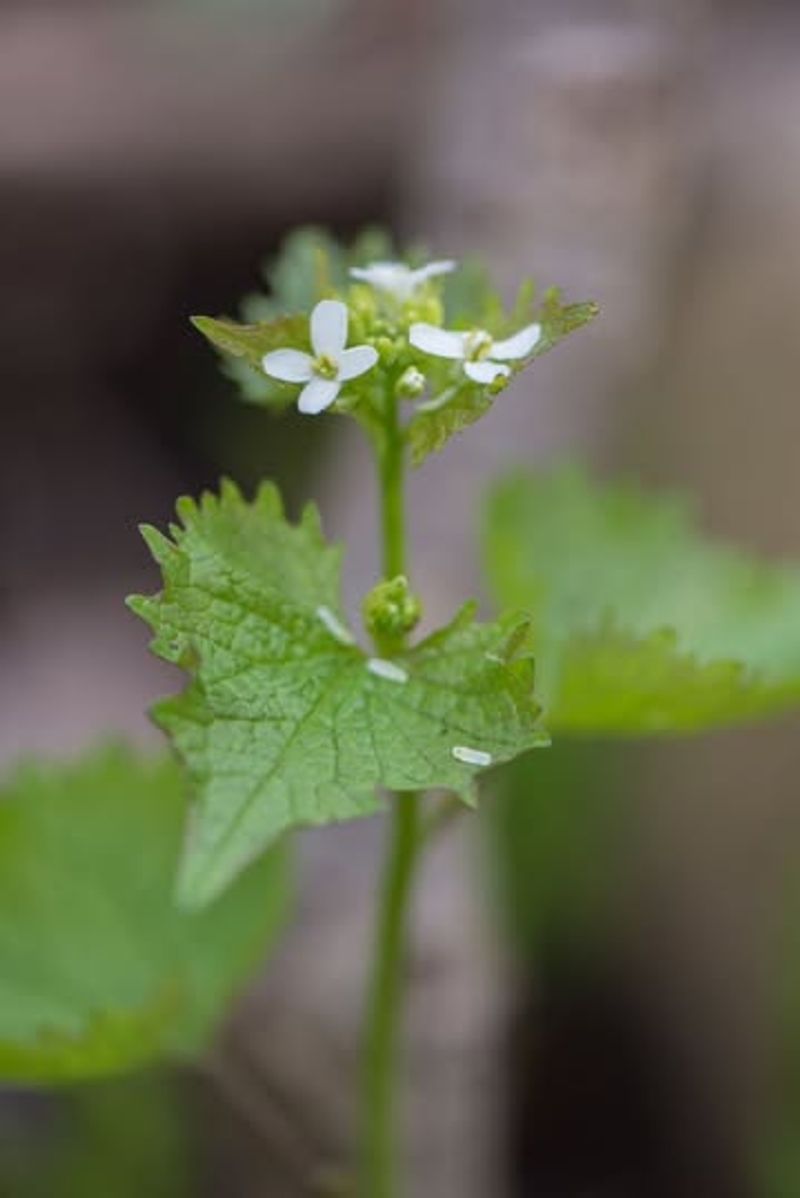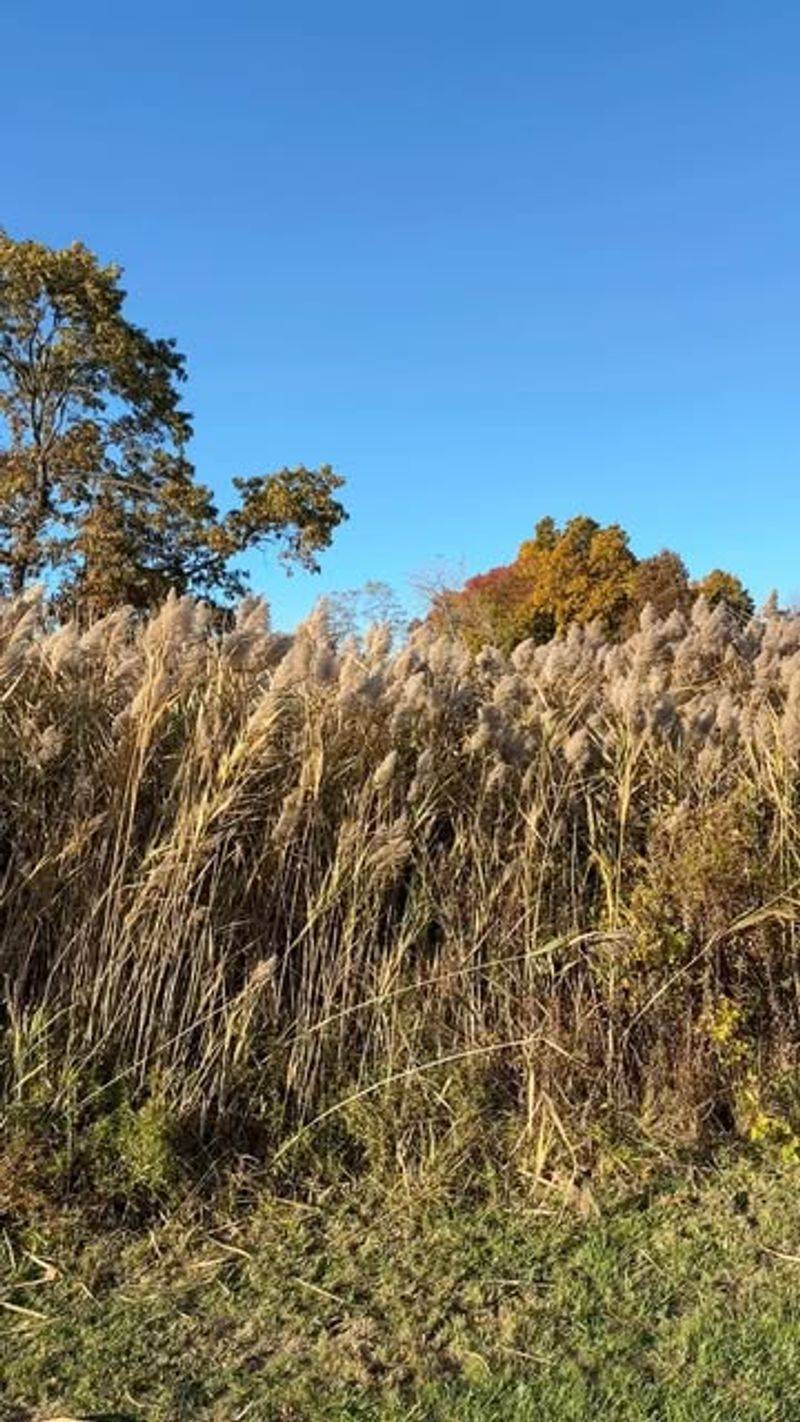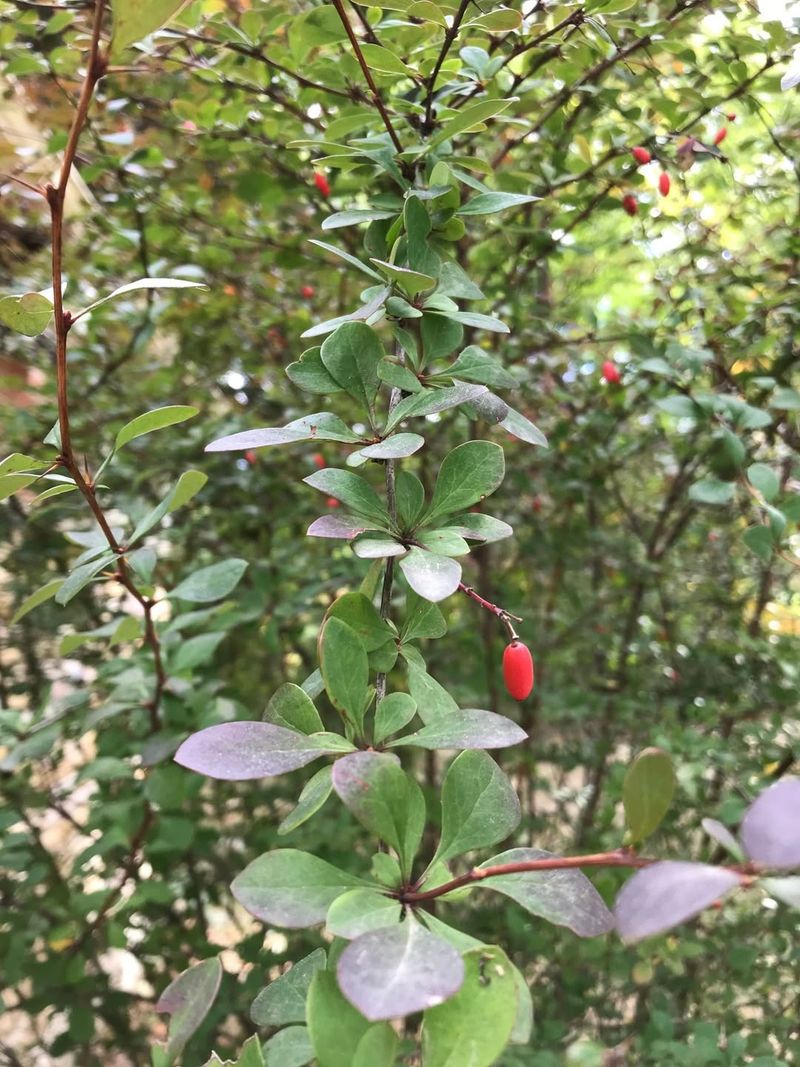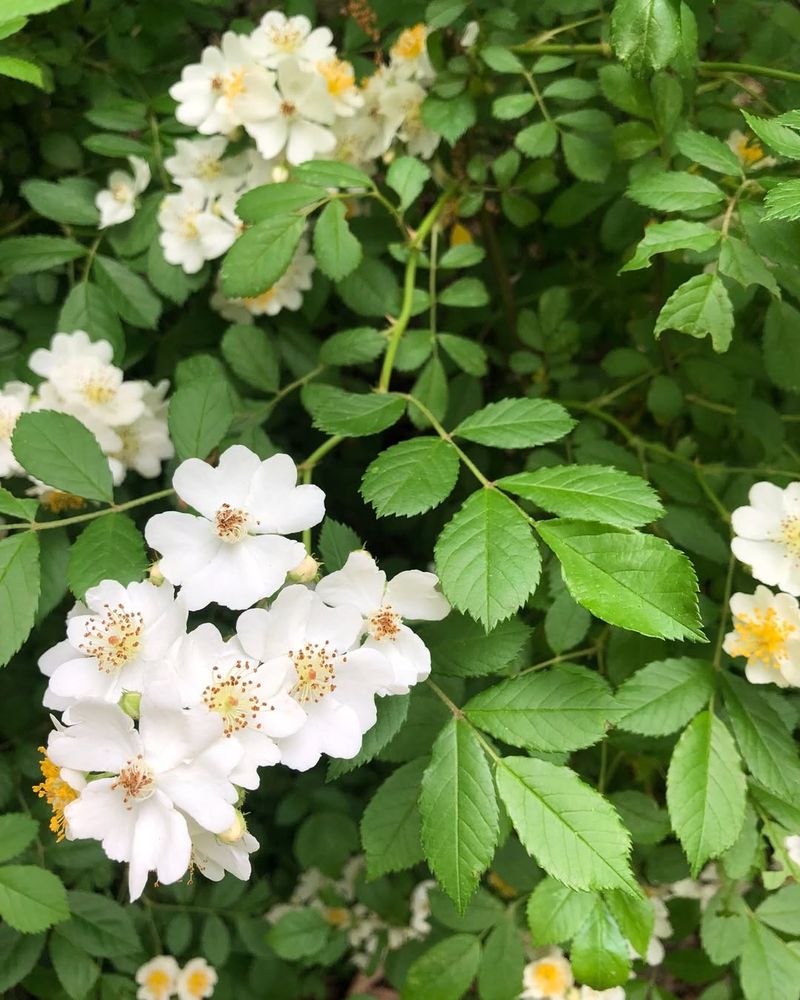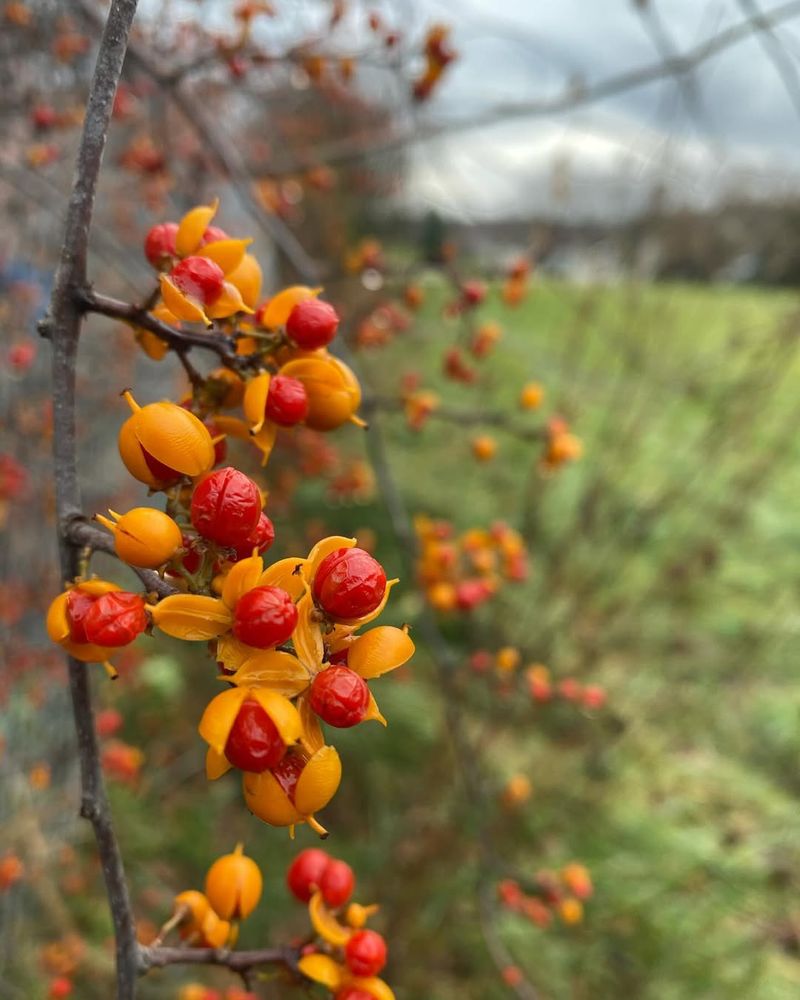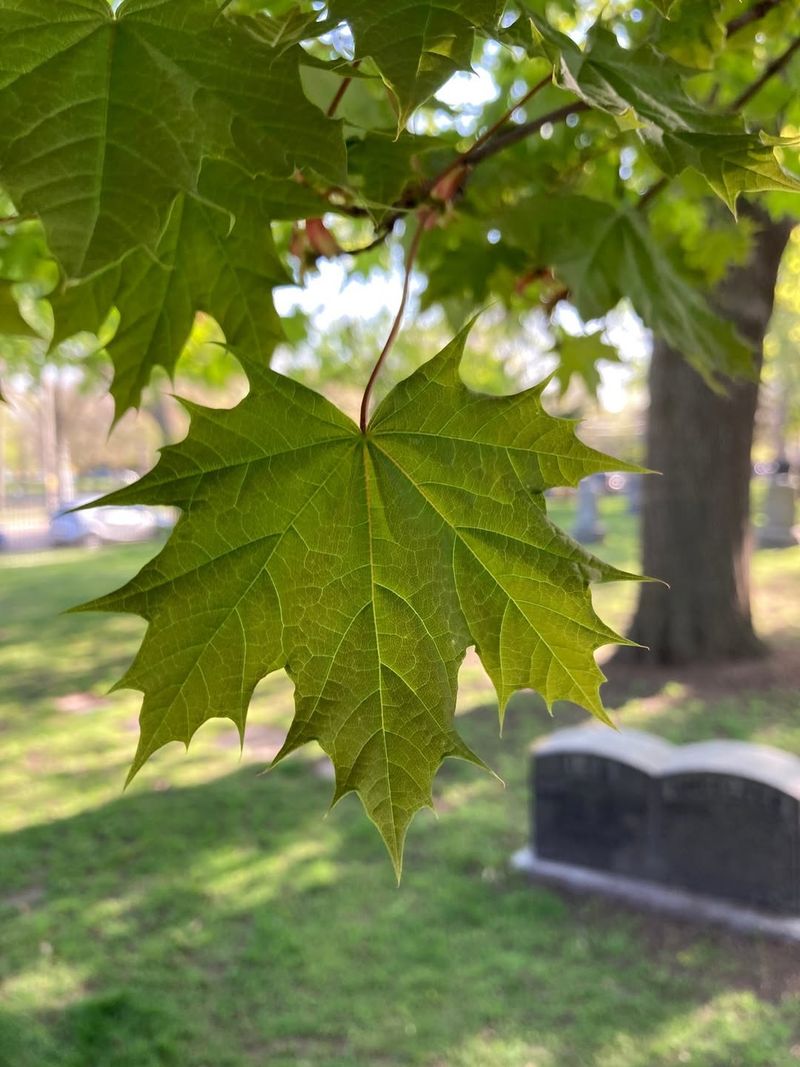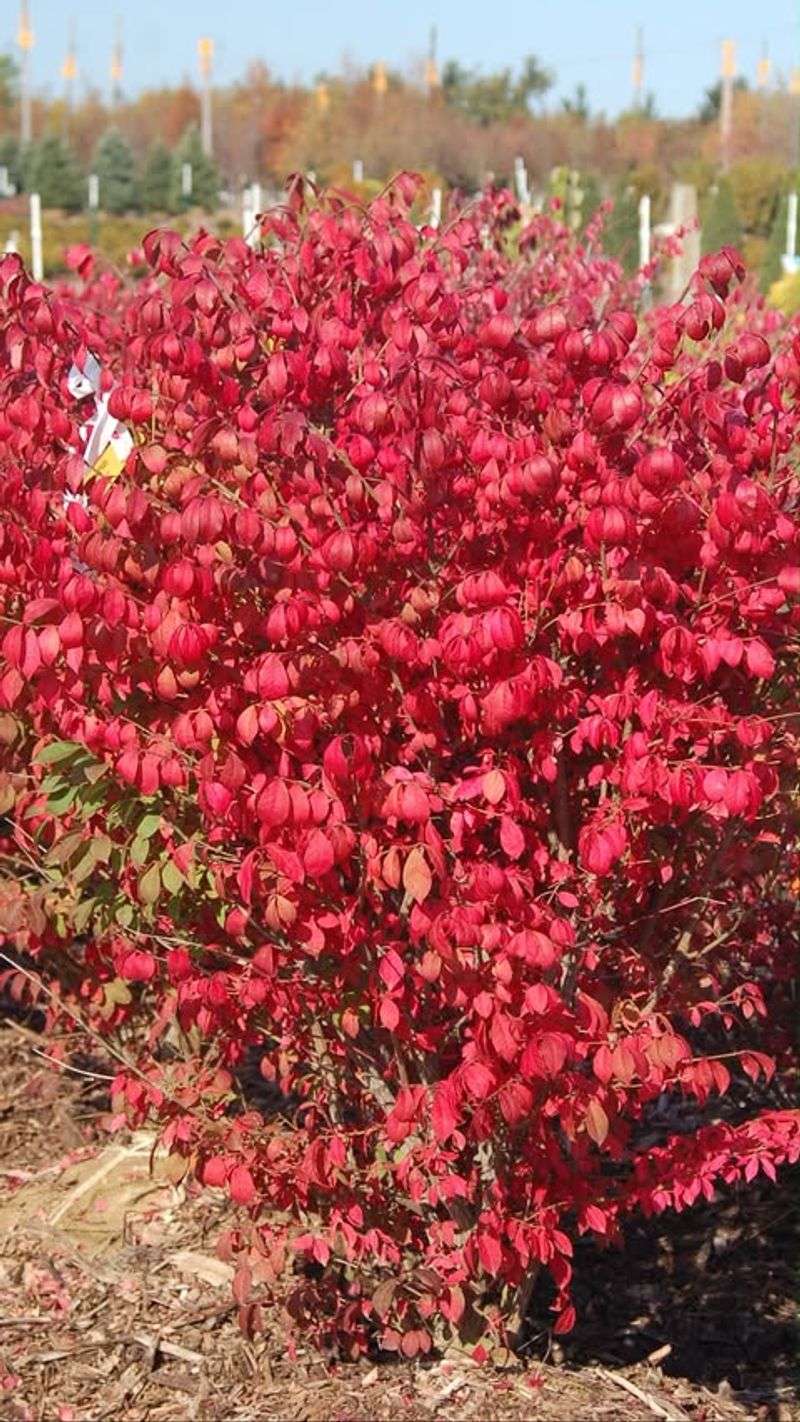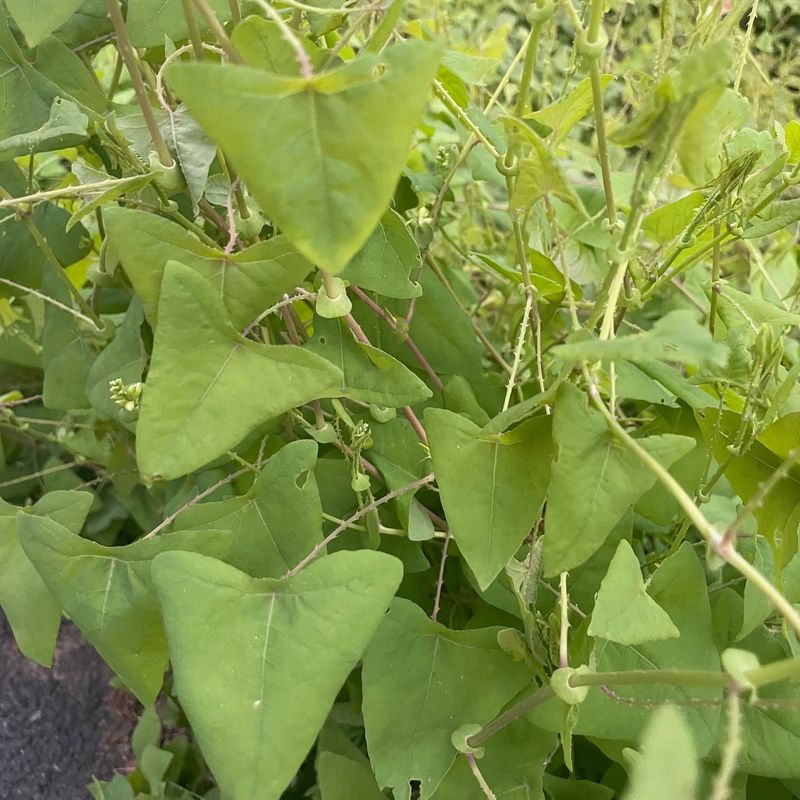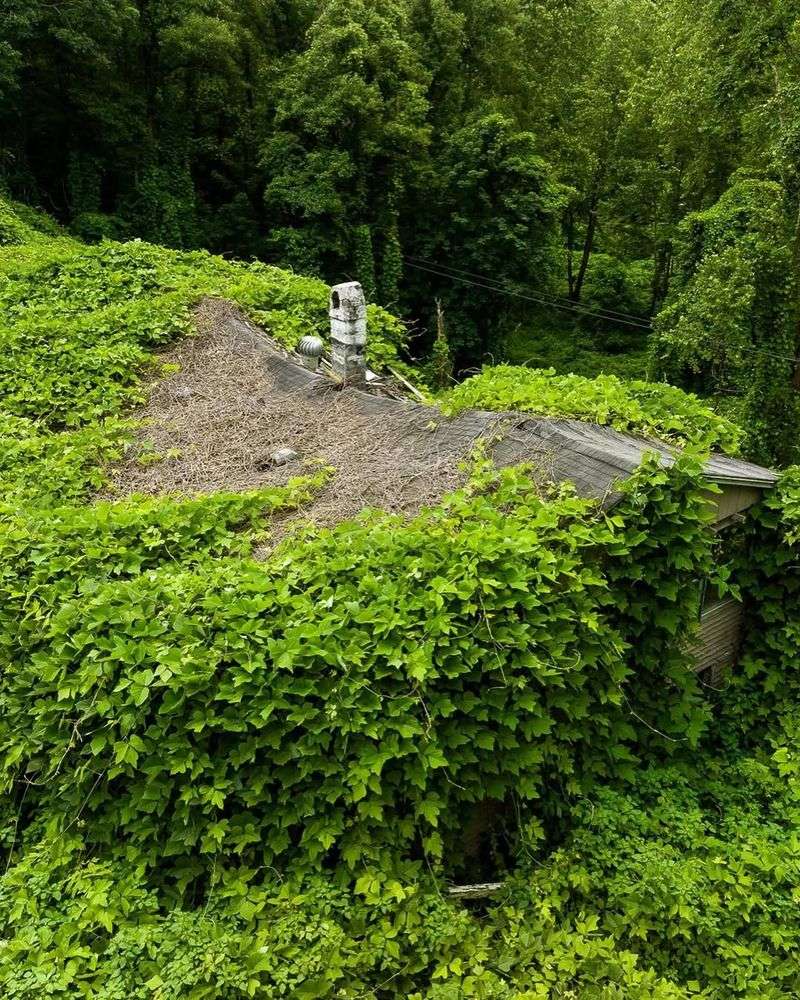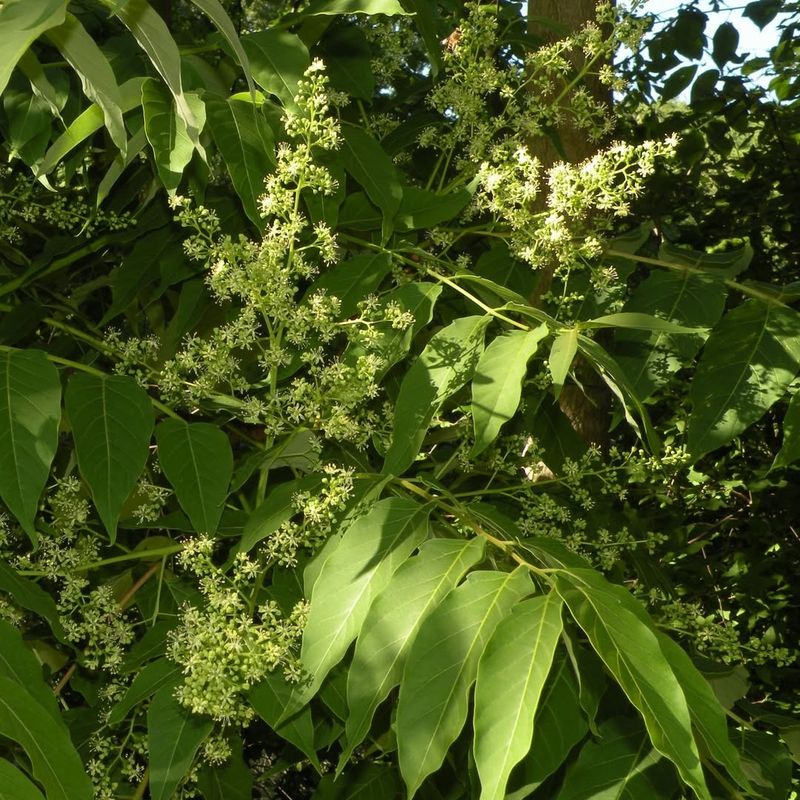New York gardens can unintentionally host invasive plants that spread fast. Laws are changing to protect local ecosystems from these aggressive species.
Knowing which plants to watch keeps your garden safe and compliant. Staying informed now prevents headaches later.
1. Japanese Knotweed
Bamboo-like stalks shoot up fast and can crack through concrete driveways and foundation walls in New York neighborhoods. Japanese knotweed spreads through underground roots that travel up to 20 feet away from the main plant.
Property values drop when this invader takes hold because it costs thousands to remove properly. Even tiny root fragments can sprout new plants, making backyard removal extremely difficult.
New York officials worry about infrastructure damage and want homeowners to stop planting it as a privacy screen.
2. Purple Loosestrife
Wetlands across New York turn solid purple when this showy plant blooms each summer. Birds and beneficial insects lose their food sources because purple loosestrife pushes out native marsh plants that wildlife depends on.
One plant produces over two million seeds annually, which explains why it spreads so aggressively. Garden centers used to sell it as an ornamental, but that practice created today’s ecological nightmare.
State biologists release special beetles that eat only this plant to slow its takeover of precious wetlands.
3. Autumn Olive
Silvery leaves and red berries make this shrub look attractive along New York highways and parks. Wildlife eats the berries and spreads seeds everywhere, creating dense thickets that block sunlight from reaching forest floors.
Farmers originally planted autumn olive for erosion control without realizing how aggressive it would become. Native berry-producing plants get crowded out, reducing food quality for migrating birds.
Removal requires cutting stems and treating stumps with herbicide to prevent rapid regrowth throughout the growing season.
4. Garlic Mustard
Forest floors in New York disappear under blankets of this shade-tolerant invader each spring. Garlic mustard releases chemicals into soil that prevent native wildflowers and tree seedlings from growing properly.
Butterflies suffer because their caterpillars cannot eat garlic mustard leaves, even though adult butterflies mistakenly lay eggs on the plants. Early settlers brought seeds from Europe as a cooking herb centuries ago.
Pull plants before they flower to stop seed production, but wear gloves since oils can irritate skin.
5. Common Reed (Phragmites)
Roadside ditches and marshes throughout New York suburbs become impenetrable walls of these towering grasses. Phragmites grows over 15 feet tall and forms monocultures that destroy habitat for turtles, frogs, and nesting birds.
Native phragmites exists in New York, but the invasive European variety aggressively outcompetes everything around it. Property owners lose waterfront access when dense stands block views and pathways to lakes and streams.
Professional removal often requires multiple years of cutting and herbicide treatment during specific growth stages.
6. Japanese Barberry
Landscapers love this thorny shrub for its red fall color, but New York ecologists see a growing threat. Dense barberry thickets create perfect hiding spots for deer ticks that spread Lyme disease to people and pets.
Studies show tick populations are three times higher in areas with Japanese barberry compared to native shrubs. Birds spread seeds into forests where the plants alter soil chemistry and crowd out native understory species.
Homeowners should replace barberry with native alternatives like winterberry holly for similar visual appeal without health risks.
7. Multiflora Rose
Highway departments once planted this rose along New York roadsides as living fences for livestock and erosion control. Curved thorns catch on clothing and skin, making overgrown patches painful to navigate or remove from properties.
Each plant produces hundreds of thousands of seeds that stay viable in soil for up to 20 years. Pastures become unusable when multiflora rose forms impenetrable tangles that cattle and horses cannot graze through.
Cutting alone stimulates more vigorous growth, so effective removal requires digging roots or applying herbicide carefully to cut stems.
8. Oriental Bittersweet
Decorative fall wreaths often feature the orange berries from this aggressive climbing vine found throughout New York. Trees die when bittersweet vines wrap around trunks and branches, blocking sunlight and adding weight that causes breakage during storms.
Native American bittersweet gets outcompeted and hybridizes with the invasive Asian species, threatening genetic diversity. Birds eat berries and deposit seeds across wide areas, spreading the problem to new forests and suburban yards.
Remove vines by cutting near ground level and treating stumps immediately to prevent resprouting from vigorous root systems.
9. Norway Maple
Suburban streets and parks across New York feature these popular shade trees, but their dense canopy prevents anything from growing underneath. Shallow roots buckle sidewalks and outcompete native sugar maples for water and nutrients in forest edges.
Thousands of winged seeds helicopter down each fall, sprouting into seedlings that invade natural areas. Native wildflowers disappear from woodlands when Norway maples take over because their thick leaf cover blocks essential sunlight.
Consider planting native red or sugar maples instead, which support hundreds more insect and bird species in local ecosystems.
10. Burning Bush
Fiery red autumn leaves make burning bush a favorite foundation plant around New York homes and businesses. Seeds escape from yards into forests where the shrubs form dense understories that native plants cannot penetrate or compete against.
Garden centers still sell this invasive species despite its documented environmental harm in natural areas. Birds consume the small fruits and distribute seeds widely, establishing new populations far from original plantings.
Swap burning bush for native alternatives like blueberry or chokeberry that provide similar fall color plus food for beneficial wildlife species.
11. Mile-a-Minute Vine
Backward-pointing barbs on stems help this vine climb over everything in its path at incredible speeds throughout New York. Young trees and shrubs suffocate under blankets of mile-a-minute that blocks photosynthesis and adds crushing weight.
One plant can grow 25 feet in a single growing season, living up to its descriptive common name. Restoration projects and natural areas face expensive ongoing control efforts to prevent complete takeover by this Asian import.
Early detection and immediate removal prevents establishment, but established patches require persistent multi-year management using mechanical and chemical methods combined.
12. Kudzu
Southern states know kudzu as the vine that ate the South, and it is creeping northward into New York counties. Vines grow up to one foot per day during summer, smothering entire trees and buildings under thick green blankets.
Climate change allows kudzu to survive winters farther north than ever before, threatening New York ecosystems. Root crowns can weigh 400 pounds and require heavy equipment to excavate completely from infested properties.
Report any kudzu sightings to local conservation authorities immediately, since early eradication prevents catastrophic spread into surrounding natural areas and neighborhoods.
13. Tree of Heaven
Cracked sidewalks and abandoned lots across New York sprout these fast-growing trees that smell like rotten peanuts when damaged. Root systems release chemicals that poison surrounding plants, creating bare zones where only tree of heaven can survive.
One mature tree produces over 300,000 wind-dispersed seeds annually that invade forests and yards. Spotted lanternfly insects prefer this tree, making infestations worse in areas where both invasive species occur together.
Cutting triggers aggressive root sprouting, so effective removal requires girdling or careful herbicide application by trained professionals familiar with proper timing and techniques.

